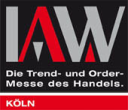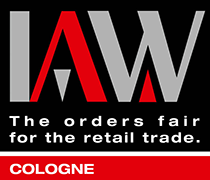The true cost of Facebook advertising
Ads on Facebook are the panacea of choice for many companies when it comes to digital advertising. The platform itself puts the number of monthly active Facebook users worldwide at around 2.8 billion, not including other platforms in the so-called meta advertising network, which includes Instagram and WhatsApp. In recent years, the advertising network has come under increasing fire, from accusations of a high proportion of fake accounts to the misuse of personal data points for political campaigns in the “Cambridge Analytica” scandal. The question is, will Facebook ads be worthwhile in 2022? How high are the costs of these advertising measures and how do I calculate my budget?
These are important questions that many entrepreneurs have to ask themselves when it comes to their brand’s digital communication policy. For this reason, in this article we have outlined the most important developments in digital marketing with regard to Facebook advertising and summarized the most important key figures of the costs incurred.
Function of the Facebook ad auction
The costs of ads in the meta advertising network, for example on Facebook, cannot be specifically quantified. The platform follows a similar approach to many other online advertising networks. There is no offer with a fixed price for a specific service if you want to advertise on their platform. Instead, the cost of your Facebook advertising will vary depending on a number of different factors.
From a technical perspective, Facebook operates an auction system in which potential advertisers place bids to obtain the right to run their advertising campaigns. In doing so, Facebook not only awards advertising space according to the highest bid, but creates a balance between advertisers who want to reach people and users who would be interested in seeing that message. Behind the scenes of social media networks, billions of auctions take place every day that determine what content a user sees in their feed. Facebook therefore weighs up all the competing bids for a slot and selects the ad that it believes offers the best value for the user.
Campaign types and their bidding options
When creating an ad on the Facebook advertising network, the first step is to set a financial budget and define the objective of the campaign. Facebook gives you the option to focus your campaign on some general optimizations. Each of these adjustments automatically optimizes your campaign for a specific bidding option and specific goals.
The following options are the most common ways to do this:
Cost per 1000 impressions (CPM) – Your payments are dependent on the thousand contact price, regardless of whether users click on it or not. Facebook aims to reach as wide an audience as possible.
Cost per click (CPC) – You pay every time someone clicks on your ad, regardless of what they do after clicking. To do this, the algorithm selects people who it believes are most likely to click through to your website.
Cost per action (CPA) – Facebook’s pixel is used, for example, to measure the orders in your online store (actions), which serve as the basis for the cost of the campaign. Facebook targets your campaign to people who they believe will complete your desired conversion.
How do I set a suitable budget?
In principle, any budget can be used on Facebook. What makes financial sense for the respective company is a different question. This is where unit economics, i.e. the costs that a product incurs, play a decisive role. Products with a low margin often leave very little room for maneuver to ensure profitable advertising. For this reason, it often seems sensible to use a rule of thumb to determine an estimate of the budget to be spent.
A budget calculation can be carried out on the basis of three factors. Firstly, the size of the target group plays a role. As always, the more people you want to reach, the more money you need. In addition, the frequency of the ads for users is a decisive factor, because the attention span of users decreases drastically over the course of the usage period, which means that several touchpoints are usually necessary for a conversion. The third factor is the CPM, i.e. the cost of reaching 1000 users. On average in Europe, this is usually between 4 and 6 euros.
(target group size * frequency) / 1000 * CPM = budget
If the selected target group comprises 367,000 people and these are to be played with a frequency of 1.8 and an average of EUR 5.5 has to be paid for this, the budget can be determined as follows:
(367,000 * 1.8) / 1000 * 5.5 = 3,633 EUR
Important! This is a guideline that should be regarded as a rule of thumb; the number of factors that determine the actual cost of advertisements makes it impossible to generalize.
Important factors that tell you whether your Facebook Ads are worthwhile
Facebook Ads require that all costs incurred are kept under control in order to guarantee the profitability of the advertising measures. A focus on the essential factors, i.e. the key performance indicators (KPIs), is indispensable. A wide variety of KPIs and units of measurement from the tracking results are displayed in the Ads Manager, which means that the essentials are often lost. For this reason, the central KPIs that have an influence on the costs of an advertising measure and thus determine how useful these efforts actually are are presented below. The relationship between the factors and how they influence each other plays an important role here.
Key factors are:
CPM – Unit of measurement for the reach of advertising measures and as an indicator of success within the network.
CPC for outbound clicks – Unit of measurement for the cost of traffic that directs users to the site.
Conversion rates – Standard value that indicates the average percentage of users who actually perform a desired action on your website.
Cost per order – Summarized guideline value for the average cost of a new order.
Shopping cart value – Snapshot of the economic output of a customer, i.e. the financial value of a customer, also known as customer lifetime value.
From these factors and their ideal target values, initial indications can be found as to what a Facebook campaign must look like in order to be economically viable.
Placing Facebook ads means testing, testing and testing again!
As always, the rule of thumb in digital marketing is: the proof of the pudding is in the eating! Facebook Ads are currently much more expensive than they were a few years ago. Nevertheless, it is not too late to take the plunge. Every case is different and all generalizations can quickly prove to be invalid for a specific product. It is therefore important to run a test in which central KPIs, such as the cost per order, are defined as target values in advance so that they can be validated. A number of factors can be identified that have a direct influence on the efforts. These must then be identified in the second step in order to be able to evaluate the true costs of Facebook advertising for the specific case.

